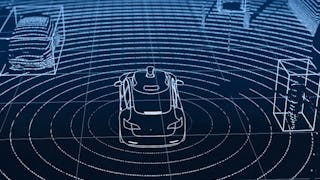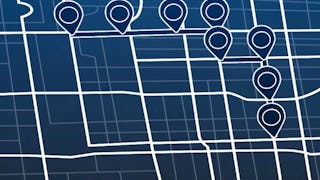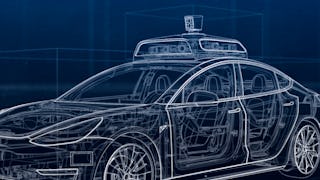Willkommen zu State Estimation and Localization for Self-Driving Cars, dem zweiten Kurs der Self-Driving Cars Specializations der University of Toronto. Wir empfehlen Ihnen, den ersten Kurs der Specializations zu besuchen, bevor Sie diesen Kurs belegen.
In diesem Kurs lernen Sie die verschiedenen Sensoren kennen und erfahren, wie wir sie für die Zustandsabschätzung und Lokalisierung in einem selbstfahrenden Auto einsetzen können. Am Ende dieses Kurses werden Sie in der Lage sein: - Die wichtigsten Methoden zur Parameter- und Zustandsschätzung für das autonome Fahren zu verstehen, wie z.B. die Methode der kleinsten Quadrate - ein Modell für typische Fahrzeuglokalisierungssensoren zu entwickeln, sie können ein Modell für typische Sensoren zur Fahrzeuglokalisierung entwickeln, einschließlich GPS und IMUs - Sie können erweiterte und unscented Kalman-Filter auf ein Problem der Fahrzeugzustandsschätzung anwenden - Sie verstehen das LIDAR-Scan-Matching und den Iterativen Closest-Point-Algorithmus - Sie können diese Werkzeuge anwenden, um mehrere Sensorströme zu einer einzigen Zustandsschätzung für ein selbstfahrendes Auto zu verschmelzen Im Abschlussprojekt dieses Kurses werden Sie den Error-State Extended Kalman Filter (ES-EKF) implementieren, um ein Fahrzeug mit Daten aus dem CARLA-Simulator zu lokalisieren. Dies ist ein Kurs für Fortgeschrittene, der sich an Lernende mit einem Hintergrund in den Bereichen Maschinenbau, Computer- und Elektrotechnik oder Robotik richtet. Um in diesem Kurs erfolgreich zu sein, sollten Sie über Programmiererfahrung in Python 3.0 verfügen und mit Linearer Algebra (Matrizen, Vektoren, Matrixmultiplikation, Rang, Eigenwerte und Vektoren und Inversen), Statistik (Gaußsche Wahrscheinlichkeitsverteilungen), Kalkül und Physik (Kräfte, Momente, Trägheit, Newtonsche Gesetze) vertraut sein.

















